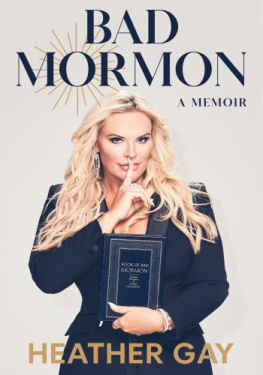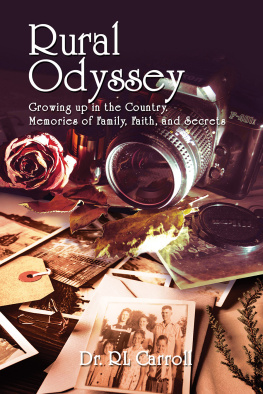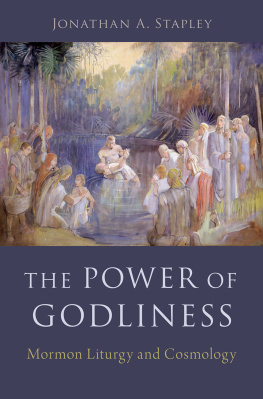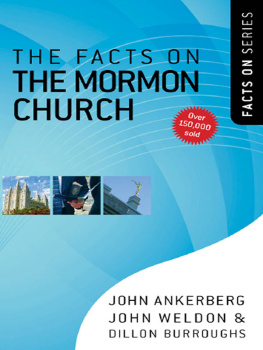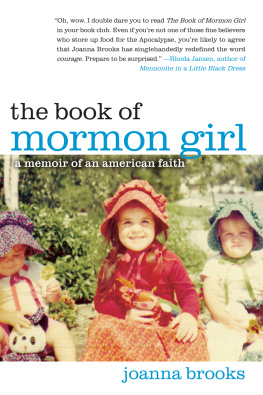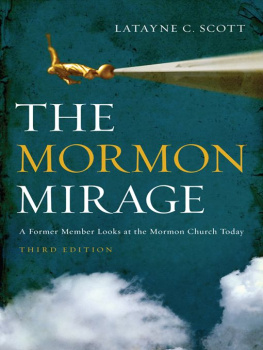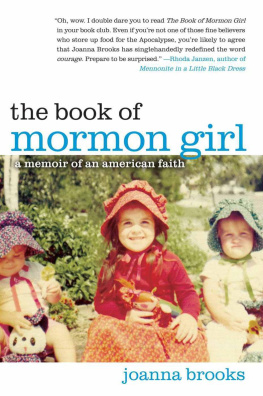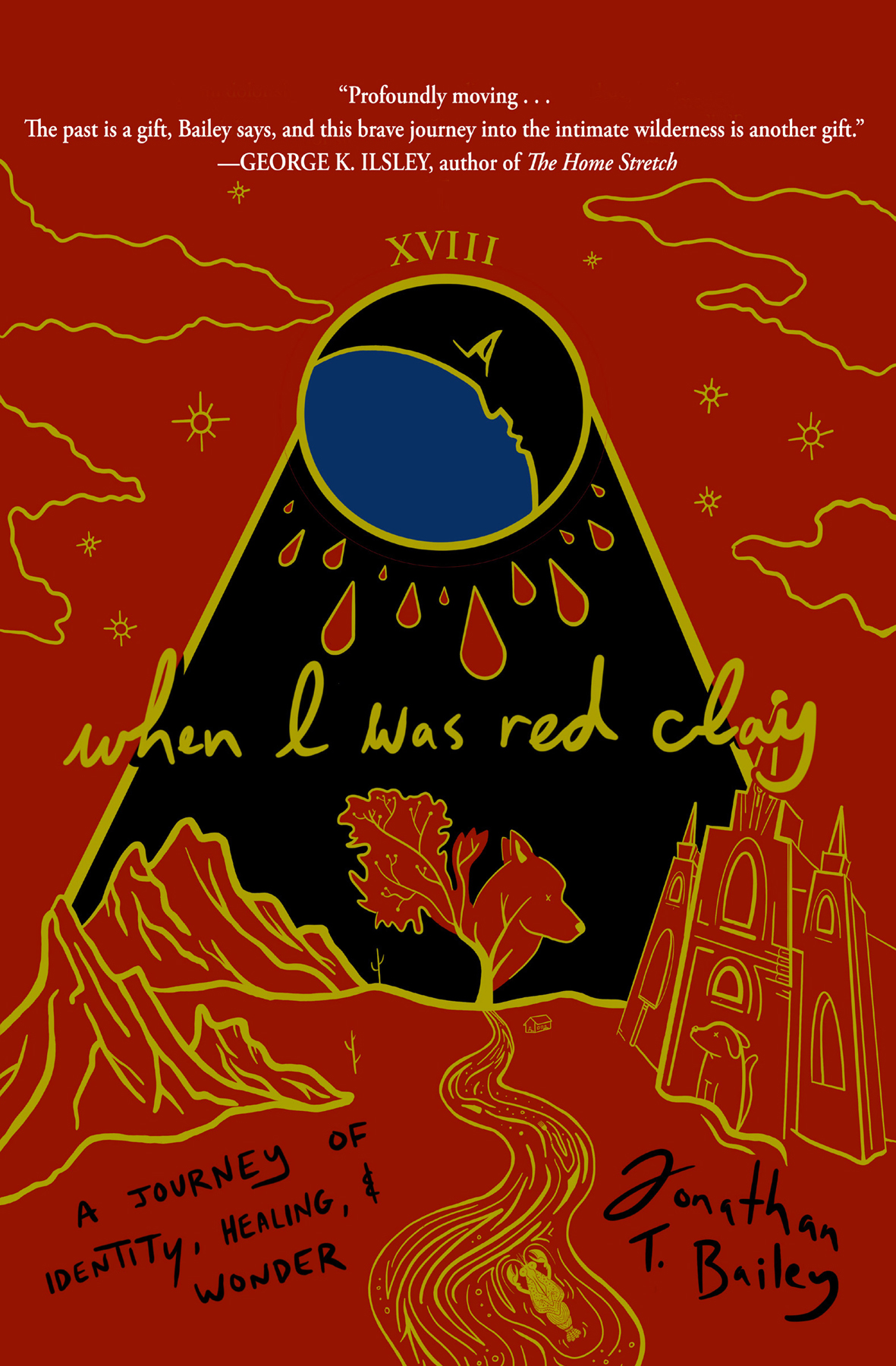Contents
Guide
Pagebreaks of the Print Version
PRAISE FOR WHEN I WAS RED CLAY
Utahs Emery County maps hard ideological boundaries over some of the harshest landscapes of the arid West. Even so, the stratified cliffs, seeping recesses, and crustal sinks testify of lush and various inhabitations, eon upon eon. Utterly here, Bailey confines us to a temporal body untenable and ecstatic, hypersensitized to the play of surface and interior, opacity and revelation, hostility and intimacy. This kind of writing can only emerge from the awful beauty of always-yet-never Home.
KARIN ANDERSON, author of Before Us Like a Land of Dreams
In Baileys profoundly moving memoir, the diversity of creation illuminates the inner landscape and inspires healingand wonder. The past is a gift, Bailey says, and this brave journey into the intimate wilderness is another gift. With the clarity and fresh eyes of meditation, we visit the topography of bones, the meaning of the natural world, and the centering of spirit within ourselves, within community, and in our footsteps and vision. In the true meaning of the word: this book is awesome.
GEORGE K. ILSLEY, author of The Home Stretch: A Father, a Son, and All the Things They Never Talk About
After leaving the church of his childhood, Bailey realized he always had his religion in the power of nature. The desert saved him. Its ability to heal was always his refuge and became more so as he grew older and life under the strictures of the church became unbearable. When I Was Red Clay is about loss, gain, and an homage to the western desert country, a place that can be unimaginably bewitching. When you grow up with an appreciation for the natural world, you find wonder and solace in the smallest things. Sometimes its just the blue sky or fresh air, sometimes its following in the footsteps of those whove gone before us in this beautiful land. I read with affinity as Bailey described holding and stroking the scales of a nearly drowned lizard. Havent we all done this type of thing and been moved by it? I havent read something so beautiful in a long time. I cant stop thinking about it.
MARYA JOHNSTON, Out West Books
WHEN I WAS RED CLAY
A JOURNEY OF IDENTITY, HEALING, AND WONDER
Jonathan T. Bailey
TORREY HOUSE PRESS

Salt Lake City Torrey

First Torrey House Press Edition, August 2022
Copyright 2022 by Jonathan T. Bailey
All rights reserved. No part of this book may be reproduced or retransmitted in any form or by any means without the written consent of the publisher.
Published by Torrey House Press
Salt Lake City, Utah
www.torreyhouse.org
International Standard Book Number: 978-1-948814-63-8
E-book ISBN: 978-1-948814-64-5
Library of Congress Control Number: 2021941428
Cover art by Jonathan T. Bailey
Cover design by Kathleen Metcalf
Interior design by Rachel Buck-Cockayne
Distributed to the trade by Consortium Book Sales and Distribution
Torrey House Press offices in Salt Lake City sit on the homelands of Ute, Goshute, Shoshone, and Paiute nations. Offices in Torrey are on the homelands of Southern Paiute, Ute, and Navajo nations.
To the hummingbird I watched in her nest of spiderwebs and moss, babies warm against her blotched-green belly feathers. The Aztecs believed that successful warriors were quauhteca who carried the sun before their reincarnation as hummingbirds. For their children, mothers are made of war and light.
Contents
authors note
This book is a memory, which the Merriam-Webster dictionary defines as the power or process of reproducing or recalling what has been learned and retained especially through associative mechanisms. Like memory, it is not linear, and does not begin, nor end, but exists as it emerged in dreams, journals, letters, poems, and thoughtsgiving allowance for neurodivergent ways of experiencing the world. It is also a story of loss, and healing. For LGBTQ+ individuals throughout the world, the decision to come out is not easy, nor is it without consequences.
In the wake of loss, we pick up our brushes, our sewing needles, our microphones, and our pens, and we create a better world, regardless of whether we can inhabit it. We make loving families, and open-armed communities. In literature and art, we create new worlds where being different is not only tolerated but celebrated. Little by little, we lay nourishing soils where we once knew hardpan and plant seeds of inclusivity in our lives and for generations to follow.
The hand-painted cover of this book pays homage to the many gender, romantic, and sexual minorities who have explored their faith by tarot after being rejected by conventional religions. It is inspired by the 1909 RiderWaite tarot card, the Moon. In poet and mystic A. E. Waites book, The Pictorial Key to the Tarot, the Moon card represents fears of the natural mind in the presence of that place of exit and calm upon [our] animal nature, while the abyss beneath shall cease from giving up a form. While tarot is a spiritual expression of which I dont partake, it is my honor to share this important part of gay culture, with its hard-won history of sacrifice and reconciliation.
If you walk away from this book with nothing else, I hope it is the value you find in yourself, in our communities, and the value we share in wild places. If you are struggling, please consult with the National Suicide Prevention Lifeline at 1-800-273-8255 and a mental health professional.
In solidarity,
Jonathan
foreword
Much like the dramatic landscapes and species that epitomize the North American deserts, Jonathan T. Bailey was wrought by formidable and unrelenting forces and elements into a unique and understated scholar and artist. The landscape and its inhabitants (past and present) are a personal sounding board that helps many of us naturalists navigate the elements of our personal, familial, and societal landscapes. A fortification against the fickle vagaries, and lingering side effects, of the Anthropocene.
Connecting with this young and sensitive autodidact has been a welcome turn of eventsenhancing each others understandings of the world from our unique backgrounds and experiences. Vibrant in Jonathans work is a keen awareness inherent in Indigenous and ecologically minded people of traditional ecological knowledge. That is, the kin-centric network of ever-extending relationsgardens of cognitionwe all participate in. His dedication to conveying the beauty of rock art and desert landscapes has placed him close to the mirror of nature. Oodham elder Camillus Lopez warns us that if we dont see ourselves in this mirror, were standing too far away.
What you hold in your hands is a personal reflection and statement about healing and restoration across heart, mind, body, landscape, and species. In this current age we are faced with a specter of rapid change and uncertainty. Jonathans works help us better manage how we deal with the lemons that life presents. If not lemonade, something. Think about the experiences and events that have brought you in meaningful touch with Earth and their inhabitants, and then back to yourself. Hold it, lean into it, learn from it, cherish it.



